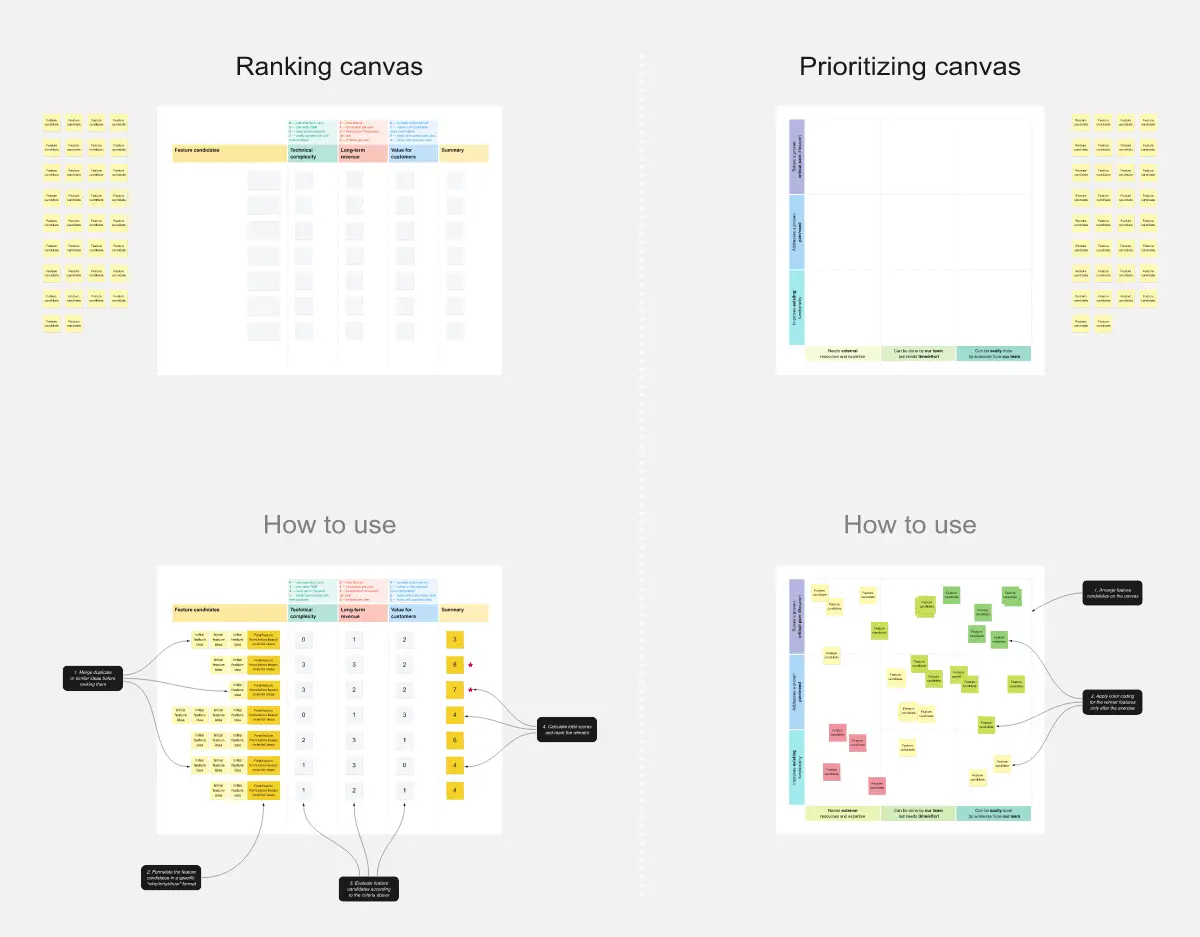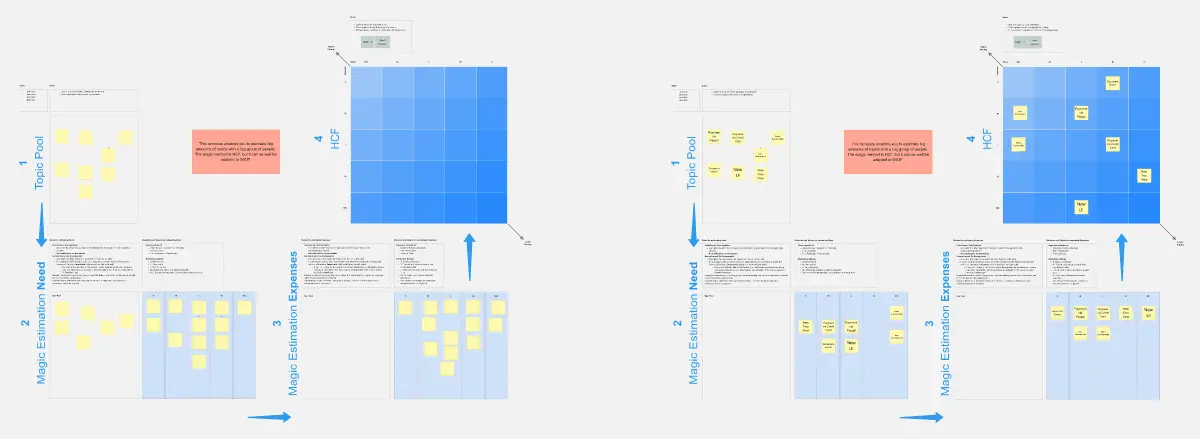Category Design Canvas
What it is
Category Design is an impressive way to see the world and to position your product in it. It doesn’t fit everybody but understanding the world of categories is extremely helpful. This canvas is a way to draft Categories and define and integrate them in your business.
For whom is it meant?
This Template is meant for Product Managers, Marketing Managers, CEOs, and Business Developers.
When is it used
It can be used in the beginning when drafting your business ideas, buit also for existing products during the Go To Market Phase.
What to find in there
It contains detailled information about each aspect of the canvas and also a simplified example.
Aspects of the Canvas
The Category
Name and Description
The central element names the Category and adds information about the value and the basic and unique attributes.
What I learned is that you have to select the name with the target group inn mind. The goal is not to achieve a technically perfect or fancy name but to ensure recognition. For example, "smartphone" effectively differentiates products like the iPhone from traditional phones and mobiles, immediately conveying the message: “It’s a phone, but it’s smarter.”
Existing Categories
One color for the ones you emancipate from, another for the ones related
Document existing categories using distinct colors to differentiate those you are moving away from and those related to your new category. This helps in understanding the categories your product will be positioned against, including future targets and potential competitors. Recognizing these categories is crucial for establishing differentiation and identifying competitor weaknesses.
Differentiation from other categories
The USPs of you product, but also what differs in your philosophy and approach
Highlight the unique attributes of the new category, as well as the distinct philosophy and approach that set your category apart from existing ones. This is tightly connected to your Point of View (PoV) and your Blueprint, which outline your unique market stance and future vision.
Ecosystem Mapping
Customers, Competitors, Partners
Building a new category involves creating an ecosystem that includes your company, customers, prospects, partners, and competitors. Competitors can help legitimize the category, so include them but strive to maintain a competitive edge.
Point of View (PoV)
What is your deep insights that leads to the product and the category?
Your product and category are based on unique insights. Expand on these insights to provide a holistic view of the market and how your category emerged. This narrative should clearly articulate the problem your category solves and its broader implications.
Blueprint
What will be the future of the category and the world associated to it?
The blueprint outlines the projected future of the category and its impact on the world. Look beyond immediate developments, projecting 5-10 years into the future to challenge and refine your vision, mission, and strategy.
Implications for the Product
Implications for Prioritization and Design of the Product
Focus on differentiating your product from others in existing categories and aligning it with the projected future outlined in your blueprint.
Use the blueprint as a tool to refine your vision, mission, and strategy continuously.
Implications for Positioning
Could consist of Messaging & Content, Hijacks & Events and Brand Identity (Tone of Voice)
Promote your product indirectly by promoting the category. Category Design and Content Marketing work synergistically, enabling marketing strategies that might otherwise be unattainable.
You get a good idea about hijacks and category related campaigns in the book Behind the Cloud by Marc Benioff.
Implications for the whole Company
New or changed Metrics, Economics, Brand Identity, Tone of Voice
New categories may necessitate new metrics and a shift in company identity, often requiring a louder, more purpose-driven approach. Integrate your PoV and Blueprint with your Vision, Mission and Strategy and also into your company’s culture, ensuring all employees are part of the campaign.
Categories
Similar templates





